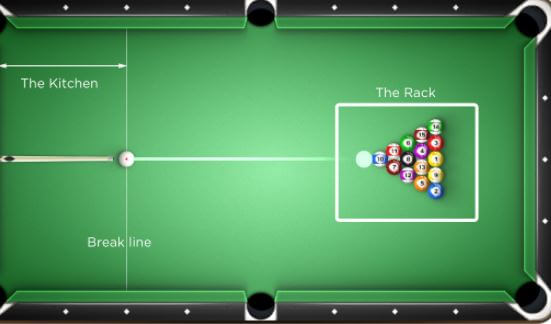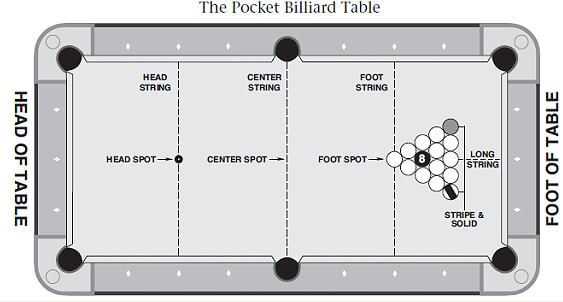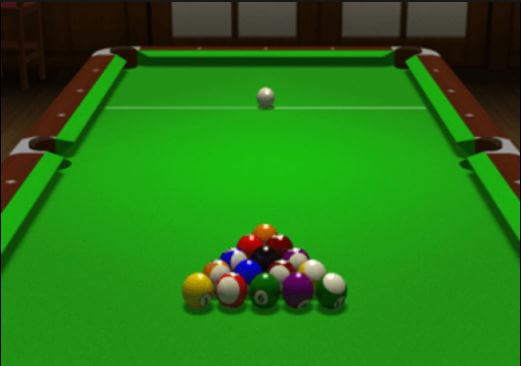History of One pocket pool game
As one pocket pool game is a billiard tables game but the rules are different. The first one-pocket game was played in 1961 by the Jansco brothers. Johnny Vives was the winner of the game. And the inventor of the one-pocket game rules was Hayden W. Lingo.
One pocket strategy is quite different from other pool games. Because it needs planning, strategy, and well knowledge for countering the opponent. You have to follow the rules of the game. Otherwise, you will be disqualified from the game and the opponent will win the game.
This game was compared with the chess game by many great players of the game.

one pocket pool rules
One pocket billiard game is an exciting game on the pool table. In this game, the rules are different from normal pool games. Here 1 pocket is selected for one person and the other 1 selected pocket for the other player. So each player tries to enter the ball for his selected pocket. When one player becomes successful to put the ball into his selected pocket, he gets another chance to shoot. If I fail to put the ball into his selected ball then the other player gets a chance of playing. Thus the game continues.
As the main task of the player is to put the ball into the pocket, when one player gets 8 points putting the ball into the targeted pocket then he wins the game.
There is no restriction on playing the ball. Both the player can hit any ball when they get the opportunity to get into the ball of his selected pool pocket.
The game is won or lost based on the player’s ability to score more points than the opposing team.
Below there are details about one pocket pool rules
What You Need To Play One Pocket Pool
This game can be challenging but it’s definitely rewarding if you have the right approach. Good luck.
The element that you need for playing the one pocket pool game is given below
- Standard Pool
- Table Pool Balls
- Typical Triangular Rack
- Cue Sticks
Some important rules are the one-pocket pool rules are given below.

The object of the game
A basic ‘One Pocket’ game is played by two-man or two teams, each with their own set of One Pocket balls, and a standard table. The players/teams alternate turns, with the first player/team to legally pocket eight balls into their own pocket just end of the table, winning the game.
Handicapping The Stronger Player
One Pocket tournament play is designed to be fair and balanced for all participants. As a result, in order to qualify for the top spots in the standings, you must earn them by winning tournaments. However, a number of after-hours players prefer to play for fun, rather than for money. In order to accommodate this type of play, the game is also designed to be handicapped.
A handicap is a rule that ensures that all players are on equal footing.
Having a set of rules for the game helps the player to learn the game more easily.
A 10-6 spot is where one player is given a higher score to chase, and the other is handicapped by being given a lower score.
Break Requirements for starting the breaking
- You start the break with a cue ball behind the string. You must do it.
- You can legally pocket the ball in your pocket.
- Cause the cue ball to hit a ball and cause at least one object ball or the cue ball to hit a cushion.
- It is a foul if you are unable to meet the opening break requirements.
Set up and break
Because the foot pocket is used to select the break, it is usually the most desirable spot to break at, but it is not the only available spot. The corner pockets, for example, are also used.
Once the first break is made, the breaking player’s pocket is selected and the opponent selects another foot pocket by default. Players lag for the next break. This continues until a game is won. The winning player is the first to break a total of seven times. If the game is tied after seven breaks, the players then switch their position on the table, the winner being the player on the far side of the table, who then breaks first.
The pool game is played with one cue stick and one cue ball, but no other equipment.

Ball pocketed on the break
Traditional One Pocket
As with any legally scored ball, if the ball is pocketed in the pitcher’s pocket and he does it without a scratch or occurring foul, it is counted and his or Any legally scored ball continues as he goes on. The player who pocketed the ball is considered the first out of the inning and the inning is considered to be complete.
If a player pockets a ball and they are called out for a strike or a balk, the batter is allowed to take an additional strike.
Modern re-rack option
If the breaker’s team breaks and they have the winning ball in their pocket, they must re-rack and break again. This may result in more than one ball being in play, and the second break is usually a re-rack, as in “re-rack and break”.
Ball in hand
Balls must be placed in the pocket before any other shot is made. If a ball is out of position after the cue ball has been placed in the pocket, the player must call out “out of position” before the shot is taken. A player who is unaware of the out-of-position status of a ball must be warned by the opponent or the referee.
After a foul is called, the opponent may shoot immediately or the shooter may continue playing. If the opponent shoots first, the shooter must place the cue ball in the pocket and then continue playing. If the shooter is allowed to continue playing, the opponent must call out “shooter continues” before the shot is taken.
Continuing play
If a player pockets a ball or ball in his own selected pocket on a legal stroke, the game will continue as long as they do it.
It is not against the law to put a ball in a neutral pocket. Unless the shooter legally pockets a ball into their own pocket, they do not have the right to continue.
End of the game
The player wins the game if they pocket their own game-winning ball and their opponent’s game-winning ball on the same legal stroke.
If the ball drops as a result of the same stroke, then it doesn’t matter which ball drops first.
Time Out
The number and length of timeouts may be limited out of respect for the opponent and good sportsmanship.
It’s considered unsportsmanlike to restart play before the opponent has returned from an approved time-out.
There is a safety play.
Unless the game is over, a player can legally score a ball into their own pocket. After a cue ball contacts an object ball, at least one object ball should be driven to a cushion, players can. As long as they please, play safe to the same rail. Rules for safety play apply to frozen ball rules.
Jumping
Until both players play the normal jump shot, they can play the normal jump shot in the one-pocket pool game.
So, In this game, Both players are not permitted to have specialized jump cues.
For watching jumping the cue ball, the tournament directors can play an important role in identifying the jump ball. He can warn the player jumping the cue ball is not allowed in the game. He can notice the player’s intention about jumping the cue ball. If the player jumps the cue ball intentionally then the ball remains to stay down and counts for the opponent’s ball.
Fouls
If the ball was in motion and it was moved by another player, that is also a foul.
The player on the right is the shooter. He is responsible for shooting the balls that are on the table. When the player shoots, he can either hit a specific ball or just make contact with the cue ball. The shooter must hit the cue ball first, or the shot will not be legal. By the way, many types of fouls occur in the game of pocket billiards.
There are many types of fouls in the game and they are
- CUE BALL SCRATCH FOULS
- BY TOUCHING BALLS,
- FOUL BY PLACEMENT,
- FOULS BY DOUBLE HITS
- PUSH SHOT FOULS,
- PLAYER RESPONSIBILITY
- FOULS, ILLEGAL
- JUMPING OF BALL,
- JUMP SHOTS
- SERIOUS FOULS
You can get many information about Cue ball fouls are as same as any type of pool table game rule of foul.
PLAYERS
In this game 2, single players play a game such as a chess game. One is an opponent to others.
BALLS USED
The total number of balls is 1 to15 and Cue-ball is mandatory.
A triangle rack
There is a triangle rack with the apex on the ground. There isn’t an order to the position of the balls in the rack.
SCORING
When a player legally pockets a ball in his pocket, or when his opponent shoots a ball into his pocket, he scores a ball in his pocket.
It is possible to play safely. Unless the ball falls in the opponent’s pocket, it will be spotted and counted for the opponent.
The outcome of the game.
You have to have at least eight balls in your pocket in order to win.
The game concluded in a loss.
If the opponent scores eight balls before the player does, the player will lose the game. A player will lose the game for committing any foul in each of three successive innings.
PAYING PENALTIES
Penalties will apply because of scratches and fouls, and such. If the player doesn’t have balls to pay the penalty, he will owe the table the balls.
After Jump Or Scratch Of The Ball
The incoming player is going to hold the ball behind his head.
CUE BALL AFTER FOUL
Incoming players must take a cue ball after sitting.
Penalties for a foul include the loss of a point, re-spotting of the ball, and in the case of a scratch, the incoming player gets the ball in hand
It’s a loss of the game when there are three consecutive fouls.
Frequently Asked Questions
Who is the most popular one-pocket pool player?
I think ”The Professor” is the most popular pool player for one pocket pool game.
How can a player get knocked out in one pocket pool?
If any player makes 3 consecutive fouls then he will be out of the game.
Is one pocket pool more difficult than a straight pool?
I think it is more difficult to play one pocket pool than a straight pool. Because both the opponents have each selected pool pocket to sink the ball to win the game.
Besides reading the whole article you can take the help of the youtube tutorial for knowing the rules of the One pocket pool game
